Talare och sammanfattning av deras seminarier
Fullständigt program 
Kevlin Henney
Curbralan

Curbralan
Kevlin Henney is an independent consultant based in the UK. He specialises in programming languages, OO design, patterns, development process and software architecture, helping teams adopt techniques and improve their software development through training, mentoring and reviewing and training. He has been a columnist for various magazines and is currently a columnist for the Reg Developer channel of The Register. He is also coauthor of two recent volumes in the Pattern-Oriented Software Architecture series.
Presentation: Five Considerations for Software Developers 
Those involved in software have a lot to keep in mind as they negotiate the worlds inside and outside of their code and the relationship between them. For those interested in improving the state of their art there are many (many) sources of specific recommendations they can use to sharpen their practice. This talk takes a step back from the busy, overpopulated and often overwhelming world of such recommendations to focus on five general considerations that can inform more detailed recommendations and specific decisions.
Jason Baragry
Sun Microsystems

Sun Microsystems
Jason Baragry is a Solution Architect with Sun Microsystems in Norway. He has a PhD in software engineering and 15 years of software architecture experience in pure research, applied research, and commercial projects.
Presentation: How to implement Service Oriented Integration using the JBI standard 
This presentation will be a live demo (no slides!) which shows how to implement a Service Oriented Integration solution using a Java Business Integration (JBI)-compliant infrastructure. It assumes the audience has some knowledge of JBI principles. Alternatively this presentation should come immediately after Jeff G's talk on ServiceMix which will explain that JBI theory. This talk will use the OpenESB open source project as the environment to highlight the JBI principles. The demo will create a solution with the following capabilities: - Create a simple "hello world" BPEL process and make it available through a webservice interface. - Extend that BPEL process to communicate with an EJB3 Session Bean through JBI integration. That is, without resorting to webservice integrations. - Extend that BPEL process to communicate with a Message Driven Bean listening to a JMS Queue. This will demonstrate the capability in JBI to make any binding connectivity "look" like a wsdl described service. - Finally, the BPEL process will be provided with an File/FTP interface so clients can choose to communicate with the business process through either a web service or file/ftp connection. This will highlight the benefit of JBI of keeping Business Logic (Service Engines) completely decoupled from the connectivity (Binding Components) used to communicate with them. Special attention will be made to ensure that the demo highlights the capabilities of JBI and not the product, OpenESB, which will be used to illustrate them. Note: I have submitted this as a 45min demo. It would be possible to do the same thing as a 2 hour hands-on lab where I provide a vmware image to participants with all the software and lead them through the process of building the solution themselves.
Jeff Genender
Savoir Technologies

Savoir Technologies
Jeff has over 18 years of software architecture, team lead, and development experience in multiple industries. He is a frequent speaker at such events as TheServerSide Symposium, JavaZone, Java In Action, and numerous Java User Groups on topics pertaining to Enterprise Service Bus (ESBs), Service Oriented Architectures (SOA), and application servers. Jeff is an active committer and Project Management Committee (PMC) member for Apache Geronimo, a committer on OpenTerracotta, OpenEJB, ServiceMix, and Mojo (Maven plugins). He is the author of Enterprise Java Servlets (Addison Wesley Longman, 2001), the co - author of Professional Apache Geronimo (2006, Wiley), and Professional Tomcat (2007, Wiley). Jeff also serves as a member of the Java Community Process (JCP) expert group for JSR-244 (Java Platform, Enterprise Edition 5 (Java EE 5) Specification) as a representative of the Apache Software Foundation. Jeff is an open source evangelist and has successfully brought open source development efforts, initiatives, and success stories into a number of Global 2000 companies, saving these organizations millions in licensing costs.
Presentation: Building a Service Oriented Architecture with ServiceMix 
Building a Service Oriented Architecture with ServiceMix There is a big buzz and a lot of hype about Service Oriented Architecture (SOA) and the Enterprise Service Bus (ESB). A solid SOA architecture allows you to use standards-based, pluggable, and loosely coupled services to integrate and communicate the critical business logic from disparate systems. Apache Service Mix is one of the first ESB implementations in open source to offer a solid foundation for building SOA applications. This session will cover Apache ServiceMix and how it implements Java Business Integration (JBI - JSR208) covering Service Engines (SE), Binding Components (BC), and how the different components communicate via the Normalized Messaging Router (NMR). It will also demonstrate coding and wiring these components together to show how to begin building a SOA based application with a real world example.
Presentation: Apache ServiceMix For Developers
Always wanted to use an ESB? Interested in how an ESB can be used in your organization? This tutorial will teach you about Java Business Integration - JBI (JSR-208) and wiring together components with Apache ServiceMix. The session will cover the major concepts of JBI such as the Normalized Messaging Router, Service Engines, and Binding Components as well as how to wire these components together. The session will offer a step by step approach to using Apache ServiceMix from setting up the ESB to coding examples.
Stephan Janssen
Parleys.com
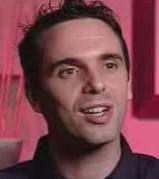
Parleys.com
Stephan is the founder and chairman of the Belgian Java User Group since 1996 and founder of JavaPolis in 2002. He has been using Java since its early releases in 1995 with experience of developing and implementing real world Java solutions in the finance and manufacturing industries. He also founder and managing director of JCS Int. a Sun authorized Java Center with an exclusive focus on J2ME, J2SE and J2EE since 1997. JCS is also the very first Belgian Java company to speak at JavaOne 2003. He was selected by BEA Systems as the first European (independant) BEA Technical Director. He has also been recognized by the Server Side as one of the 54 Who is Who in Enterprise Java 2004. Sun has recognized in 2005 his efforts for the Java Community and has engaged me in the Java Champion project. He has spoken at numerous Java and JUG conferences including Java '98 (UK), JAOO '99 (Denmark), JavaDays 2000 (Norway), TMAB (Belgium), JavaPolis 2002-04-05, JavaOne 2003, SpringOne 2006, JavaZone 2007, SAI, IT Works etc.
Presentation: Web 2.0 development with Java 
Web 2.0 is one of the most important buzzwords in the last years, however what does this mean for Enterprise Java developers? Based on the practical case-study "Parleys.com " (a web 2.0 video streaming eLearning site) we'll have a closer look at which Java API's and frameworks are available to develop such a project and how they integrate with a Flex/AIR front end.
Rickard Öberg
Jayway

Jayway
Rickard has worked on several OpenSource projects that involve J2EE development, such as JBoss, XDoclet and WebWork. He has also been the principal architect of the SiteVision CMS/portal platform, where he used AOP as the foundation. Now he works for Jayway, and is interested in how to develop domain-oriented software that is well adapted for the new wave of Internet-centered applications.
Presentation: Composite Oriented Programming with Qi4j 
OOP neglects the need of objects to adjust its behavior depending on the context. "John is a parent and programmer in the city, but a hunter and food in the jungle.". Same object, different contexts. OOP has also not fulfilled its promise of re-usability, partly due to such static behavior and partly due to its inability to deal with fine-granularity of states and behaviors. Composite Oriented Programming addresses these issues, and Qi4J is an implementation available to Java programmers today.
Joe Walker
SitePen

SitePen
Joe Walker is a developer and consultant working on advanced web development techniques like AJAX.
He recently developed Direct Web Remoting, (DWR) which has become the most popular Ajax toolkit for Java by making browser/server interaction intuitive for web developers. See http://www.directwebremoting.com
He currently works through his consultancy, Getahead (http://getahead.ltd.uk/home), which is supplying a growing number of customers with AJAX and advanced web solutions.
Presentation: Hands-on DWR
The tutorial will be split into 3 sections, the first will be an overview of DWR, where people that don't know much about DWR can find out how to get started. The second section will see us creating a multi-user application from scratch learning more about DWR as we go. In the final section we will look at integrating DWR with other frameworks, both on the server and in the browser, using our multi-user application as a test-bed
Presentation: The Case for the Open Web 
Should you build your next app with Open Web technologies? Is the web evolving to meet the growing demands that we're placing on it? When is it right to use non-open options, and what are the dangers? We will the forces at play, look at the strategic landscape and try to put into sharp focus the question: 'Can we build our next app on the Open Web?
Dan Bergh Johnsson
Omegapoint
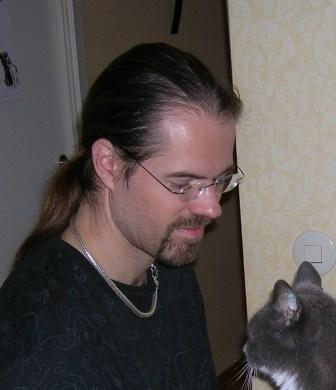
Omegapoint
Många svenska javapionjärer har på något sätt stött på Dan. Åren 1999-2003 var han huvudlärare för Suns javakurser och bidrog till Javas spriding i Sverige. Som konsult, mentor och föreläsare har han därutöver hjälpt åtskilliga programmerare och projekt genom sitt fokus på högkvalitativ systemutveckling, med enhetstester, domain driven design och agilemetodik som några viktiga verktyg.
Dan är även en regelbundet återkommande föreläsare på såväl nationella som internationella konferenser, såsom JavaZone, Øredev, JavaPolis och Colorado Software Summit. Han har även som granskare elller på andra sätt bidragit till böcker som Head First EJB, Dating Design Patterns eller den snart kommande InfoQ Domain Driven Design Quickly
Presentation: Domain Driven Design ur en utvecklares perspektiv
Desingskolan Domain Driven Design (DDD) trycker på vikten av att modelleringen av verksamheten ska sitta mitt i utvecklingsarbetet. Den betonar också att modellens värde består i hur användbar den är, inte huruvida den är "rätt" eller "sann". Målet med denna tutorial är att visa hur DDDs filosofi kan ge konkreta förändringar i hur vår kod struktureras. Och dessutom, hur dessa förändringar blir en naturlig del av det dagliga arbetet.
Under denna tutorial gör vi en överblick av DDD och dyker sedan ner i hur det konkret ser ut när man utvecklar med DDD i bakhuvudet. Eftersom det enligt DDD är viktigt att domänmodellen och koden är i synk kommer mycket fokus att ligga på hur koden konkret ser ut t ex när man använder de vanligaste DDD-desingmönstrena Entity, Repository, Value Object, Service eller Aggregate. Vi berör också hur DDD påverkar sättet vi samarbetar med beställare, DBAer, säljare, slutanvändare o s v.
Denna tutorial passar bäst för rutinerade utvecklare med erfarenhet av Java / Java EE (alt C#/.NET) och som tröttnat på 450 rader långa metoder.
Presentation: Ett litet steg mot event-driven arkitektur 
Det dominerande sättet att skriva applikationer idag är som en rad anrop som exekveras sekvensiellt. Hittills har det funkat ganska bra och med snabbare och snabbare processorer har det inte varit svårt att få in mer komplexitet i exekveringen. Den bilden håller på att förändras med dagens mulitcore-maskiner. Än har vi ett tag kvar tills vi slår i taket, men det är dags att redan nu börja fundera på hur vi kan bygga systemen på ett sätt som bättre tar tillvara hårdvaran. Givetvis kan vi ta steget fullt ut och börja bygga event-drivna arkitekturer, men troligen kommer vi inte att våga det i nästa projekt, och kanske inte i det därefter heller. Och, i vilket fall, vad gör vi med de system som redan finns. Lämnar de åt sotdöden? I denna presentation tittar vi på vad problemet egentligen är, och visar på en väg som leder oss ett litet första steg åt rätt håll. Det enda som krävs är att tänka lite annorlunda och våga lite grand.
Thorbiörn Fritzon
Sun Microsystems

Sun Microsystems
Thorbiörn Fritzon började med Java redan vid releasen 1995. Sedan 1999 är han Javaarkitekt på Sun Microsystems och då och då talesman i Java-sammanhang. Thorbiörn skriver böcker och är en återkommande talare på konferenser och andra evenemang. Hans hobby är programmeringsspråk och han har hur många som helst.
Presentation: Java i flera programmeringsspråk
I Java SE 6 kom en av de viktigaste och mest förbisedda nyheterna i Java sedan Java2: Java Scripting Framework vilken ger Java-programmeraren tillgång till ett standardireserat sätt att hantera program skrivna i en uppsjö av språk som Ruby, Python, Lisp och JavaScript. I och med Java SE 6 kan högproduktiva ramverk som Ruby on Rails och algoritmiska språk som Scheme bli en del av våra verktyg. Den här sessionen är en djupdykning i vad det innebär att skriva Java-applikationer i andra språk än Java. Vi provar att implementera program i en blandning av språk, tittar på vilka problem som i praktiken kan uppstå och vad det innebär att implementera en script-motor som stödjer Java Scripting Framework (JSR-223). Har man med sin laptop kan man följa med praktiskt.
Presentation: The Future of Java 
Where wil Java be in ten years? Will it survive or will it be replaced by .NET or Ruby on Rails and similar super-productive frameworks? Will Java be the next Cobol, an embaressing legacy languages with huge maintenance costs and no future? Will all money and time we've invested in learning Java only go to waste? This talk outlines Sun's bet on the future of Java and what we as Java Community can do to adapt to the future.
Tom Stenström
Oracle
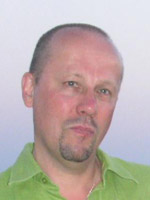
Oracle
Tom has over 20 years of experience in the IT industry working as a consultant, software developer, teacher, product-specialist, support technician and in various other roles. He has worked with a number of technologies and products as a developer, programmer, and architect. His interest has always been on new and emerging technologies and how they affect the way we look at systems and the way we develop them. Today that interest is mainly around SOA, integration and the next generation of the Web.
Presentation: Taking the next step - A high performance datagrid 
The next challenge in creating Java based business-critical solutions is Extreme Transacation Processing. This talk centers on how to improve application performance and scalability via caching architectures to reduce load on the database tier and & clustered caching to provide transparent fail-over by reliably sharing live data among clustered JVMs. Coherence Data Grid is an example of this kind of solution and will be presented in this talk.
Olle Olsson
SICS

SICS
Olle Olsson works at the Swedish Institute of Computer Science, SICS (http://www.sics.se), an international research institute within the field of IKT. There he has been active in areas of expert systems, knowledge representation, agent technology, and conceptual modelling. He also holds the responsibility for the Swedish W3C office (http://www.w3c.se), which is part of the global “World Wide Web Consortium", W3C (http://www.w3.org).
Presentation: The Semantic Web 
The web and web technologies are developing quickly and the services are adopted at high speed. Web 2.0 and Ajax are known terms. The semantic web is regarded as being the next step in the development process and has even started being referred to as ?Web 3.0". So, what is the semantic web? And how can we develop our information and our IT platform, to benefit from the advantages of this new web paradigm? The aim of this presentation is to create a concrete picture of the semantic web and its technologies. An important linchpin is the fact that the semantic web is concentrated on tying data together on the web, and representing information in a way which enables us to mechanically obtain interoperability (on information level). A prerequisite for this is that information is marked by meaning units and that various markings, based on compatible conceptual models, can be linked. This is what constitutes the ?semantics" - that the marking is based on the importance of the information. There is already a set of technologies for the semantic web, of which the most known are RDF, OWL and SPARQL. These are all included in the tool box of semantic technologies. How are they used? How do they interrelate? And how is this connected to other web technologies, as for instance XML, HTML, and WSDL? We have the basic technologies in place, but already complementary technologies are developed - technologies supporting the use of semantic technologies in specialised contexts. What about practical usage? Who have adopted the semantic technologies, and what are they using them for? Concrete examples of usage give a good insight into where the market usage stands today, what are reasonable approaches and what is going on. Some examples, as inspiration for the mind. And what about products in the field? That is, what type of support does one need and what is available? The current situation is illustrated, as well as the prognosis for the future. There are also some interesting relations between the semantic web and parts of what we can see within the Web 2.0 world.
Kirk Pepperdine
Kodewerk Ltd
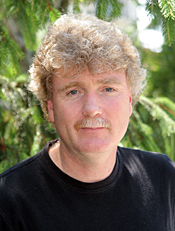
Kodewerk Ltd
Kirk's career began in Biochemical Engineering, where he applied his researching skills in attaching computers to sheep and cats, synthesising radio-active tylenol and developing separation techniques using High Performance Liquid Chromatography for Ottawa University and the National Research Council of Canada. Subsequently, he became employed by the Canadian Department of Defense. Kirk admits that his work at the DoD involved programming Cray supercomputers as well as other Unix systems, but he refuses or is unable to divulge the exact nature of the applications in the department other than that they involved databases and high performance systems.
Kirk is a principle consultant for Kodewerk where he has focused on performance tuning. Kirk has been involved with object technologies and performance for almost 20 years. In addition to being a co-author of ANT Developers Handbook, he contributes to www.javaperformancetuning.com and is an editor for TSS www.theserverside.com
Presentation: Concurrency & High Performance 
Both Intel and Microsoft have recently said that we, as developers, need to start delivering more concurrency in our applications. Just what does this mean and how did we get to this point. In this talk we will looks at the trend towards more and more cores and and what this means for Java Programmers. Can we expect that our Java applications will automatically take advantage of the extra processors or will we need to become more aware of the hardware aspects of our system. Outline of the presentation: * The trend towards Concurrency * Concurrency in the earlier JDKs * Concurrency today * Concurrency moving forward * How do we know when we have a bottleneck due to concurrency
Richard Nicholson
Paremus

Paremus
Richard, as CEO and Founder, has actively driven the strategic business and technical direction of Paremus since its formation in 2001. Richard maintains keen interest in a number of research areas including Recovery Oriented techniques, Complex Adaptive System design and Self Organized-Criticality. He is specifically interested in the application of such concepts to next generation distributed system design. Prior to founding Paremus, Richard headed the European System Engineering function for Salomon Smith Barney/Citigroup. Richard graduated from ManchesterUniversity with Honors in Physics and went on to gain an Astrophysics doctorate from the Royal Greenwich Observatory. Richard's blog can be found at: www.adaptevolve.blogspot.com
Presentation: True SOA, not Just a Bunch of Web Services
True SOA, not Just a Bunch of Web Services (JBoWS) SOA, much over hyped and under-delivered, has often, mistakenly, be used interchangeably for Web Services. This talk will break the myth that SOA = Web Services. Sure, Web Services have a role to play, however there is a gradual acknowledgment that they are not the universal solution for Enterprise SOA requirements. This talk will explore three technologies that deliver a much finer grained, truly re-usable component based approach to Enterprise SOA, namely OSGi, SCA and Jini. OSGi has been around since 1999, initially used within the embedded world, and provides a light weight, elegant solution to component re-use and management of the component lifecycle. Underpinning Eclipse since 2004, recently adopted by Interface21 for the Spring Framework and with support from most of the major Enterprise Software vendors including (BEA, IBM, Oracle, SAP & Sun) OSGi is a technology that's future looks certain as a key enabler for next generation SOA architectures. SCA, while significantly younger than OSGi, was established by many of the same well know Enterprise Software vendors, under the Open SOA initiative (www.osoa.org). Handing over of the SCA 1.0 specification to OASIS in mid 2006 has set in motion the ratification of SCA as an industry standard that will again be a fundamental contributor to the future of SOA. Jini, having been around since 1997, and written off by many, was in fact one of the first service oriented frameworks unleashed on the IT world. Now housed as the River project under Apache, Jini while not achieving widespread adoption, certainly provided many important principles that are still as valid today, as they were in their inception. We will go on to explore what these key principles are and their relevance to a distributed Enterprise SOA strategy.
Henrik Kniberg
Crisp
.jpg)
Crisp
Henrik Kniberg is a consultant at Crisp in Stockholm, specializing in Java and Agile software development. He takes a holistic approach and enjoys adopting different roles such as manager, developer, Scrum Master, teacher, or coach. He is passionate about helping companies build excellent software and excellent teams, taking on whatever role is necessary.
His interests and twelve years of experience cover most aspects of the art of software development including team leadership, development, architecture, requirements management, configuration management, and quality assurance. As cofounder of several Swedish IT companies he has spent many years experimenting with agile processes in teams of up to 45 people.
In late 2005 Kniberg was contracted as chief of development at a Swedish company in the gaming business. The company was in a crisis situation with urgent organizational and technical problems. Using Scrum and XP as a tool, he helped the company out of the crisis by implementing agile and lean principles at all levels in the company. This is described in the popular book ‘Scrum and XP from the trenches’.

Presentation: Scrum and XP from the Trenches 
How does Scrum and XP really work, on a day-to-day basis? What are the common pitfalls? How do you choose a sprint length? Where does acceptance testing fit in? How do you plan with multiple teams? How do you create and maintain a product backlog? How do Scrum and XP actually fit together? What is the best format for a sprint backlog? These are just a few examples of questions you might run into when getting started with Scrum and XP. The bad news is that there are no definite answers, as each organization is unique. The good news is that there are some fairly well established patterns and best practices. This tutorial, based on the popular book with the same name, will help you along the way by providing detailed, concrete examples of day-to-day work with Scrum and XP. This is about hard-earned experience rather than theory.
Presentation: 10 ways to screw up with Scrum and XP 
Scrum & XP may sound deceptively simple. But once you get down to the everyday practical stuff there are many subtle traps hiding about. Common mistakes that are easy to make and hard to detect, mistakes that cancel out many of the benefits that Agile methods were supposed to give. In this talk I'll go through the most common mistakes, how to detect them, what the effect is, and how to address them. This talks assumes that you have basic knowledge of Scrum and XP.
Christer Larsson
OSGi Alliance

OSGi Alliance
Christer Larsson has over 15 years of experience in business development and advanced systems design for high-tech companies with experience from the automotive, airline and telecom industries working for such companies as Volvo IT, Carmen Systems and Ericsson.
Christer has been involved in the development of the OSGi technology since 1998, taking part in the design of Ericsson's e-box concept which influenced the first releases of the OSGi specification to a large degree. He is currently the CEO of Makewave (formerly Gatespace Telematics) and the VP EMEA of the OSGi Alliance. Christer is also deeply involved in the open source OSGi project Knopflerfish.
Presentation: OSGi Technology - The dynamic Module System for Java
The OSGi technology provides a service-oriented, component-based environment for Java and offers standardized ways to dynamically manage the software lifecycle of a Java based Platform. Eclipse is built on OSGi, the spring framework recently adopted the OSGi model and step by step OSGi has become a quiet contender as a key Java technology. The presentation will give an introduction to the OSGi technology, what it is, how to use it, and how to apply it in different segments like enterprise, mobile, telematics and residential systems.
Presentation: OSGi Technology - The dynamic Module System for Java 
The OSGi technology provides a service-oriented, component-based environment for Java and offers standardized ways to dynamically manage the software lifecycle of a Java based Platform. Eclipse is built on OSGi, the spring framework recently adopted the OSGi model and step by step OSGi has become a quiet contender as a key Java technology. The presentation will give an introduction to the OSGi technology, what it is, how to use it, and how to apply it in different segments like enterprise, mobile, telematics and residential systems.
Ferid Sabanovic
Rikard Thulin
IBS JavaSolutions
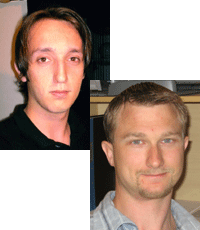
Rikard Thulin
IBS JavaSolutions
Ferid Sabanovic is a consultant at IBS JavaSolutions. His interests include J2EE and other similar object oriented technologies like .NET. Ferid is actively involved in the Swedish Java User Group Javaforum. Ferid holds a B.Sc degree in Informatics.
Rikard Thulin is a Senior Software Engineer at IBS JavaSolutions. Rikard is one of the lead persons for the Java User Group in Gotenburg, JavaFroum. In a previous life, Rikard worked as a Java Architect at Sun Microsystems. Rikard has holds a M.S. in Software Engineering.
Presentation: Hundred Kilobytes Kernel (HK2) 
Hundred Kilobytes Kernel (HK2) The java.net project "Hundred Kilobytes Kernel" (HK2) is a module subsystem coupled with a simple yet powerful component model to build software. It is a great technology to use in any Java software development and can be used in small devices such as phones up to enterprise applications. HK2 is designed to be friendly to existing technologies such as OSGi but it will also provide a path to the implementation of modules (JSR 277) in Java SE 7. HK2 is used as the foundation for GlassFish V3.
Mario Aparicio
CIBER

CIBER
Mario is currently working with Java development and Integration at CIBER Norway, an acknowledged consulting company, delivering mission critical solutions with strong focus on Java, and related technologies. He holds a Master of Computer Science from Norwegian University of Science and Technology. Mario's interests are integration, Web Services and SOA using the Java platform
Presentation: Business Processes and User Interaction 
Today's IT community has a strong focus on "business processes", especially because the emergence of "SOA". Many middleware vendors offer Process Engines, usually as a part of their ESB solutions. Traditionally, Process Engines have been used to orchestrate backend integration processes. But customers want to achieve a closer coupling between their IT solutions and their actual business processes, including the process's human tasks. One of the challenges in implementing such a solution is to define how a human user should interact with the underlying business process. This is related to the difference between a human work- or web- flow and the actual business process. Using practical scenarios and demonstrations, this presentation will highlight how this interaction can be done. The presentation shows how to integrate a business process running on a Process Engine with a standard Java Web Application, in a way that does not dictate the application?s architecture. Further I will discuss the advantages and disadvantages of having a business process in control of a user application. The differences between human workflow (webflow) tools, such as Spring WebFlow, and Business Process Modelling tools such as BPEL will be explained.
Raghavan N. Srinivas
Sun Microsystems
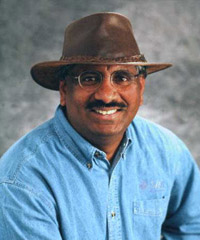
Sun Microsystems
Raghavan "Rags" Srinivas is the CTO of Technology Evangelism at Sun Microsystems looking at new technology directions and trends. His general focus area is in distributed systems, with a specialization in interoperability, mobility and security. He has spoken on a variety of technical topics at conferences around the world and teaches graduate classes in the evening. He publishes a standards column and has represented Sun at a number of standards bodies. He also serves in the organizing committee for several industry-wide technical conferences.
Rags brings with him about 20 years of software development and about 7 years of technology evangelism experience. He worked for Digital Equipment Corporation before joining Sun. He has worked on several technology areas, including internals of VMS, Unix and NT. He has evangelized a number of technology areas including the early releases of Java, Java EE, Java and XML, Java ME, AJAX and Web 2.0 and so on.
Rags holds a Masters degree in Computer Science from the Center of Advanced Computer Studies at the University of Louisiana at Lafayette. He enjoys running, hiking and eating, especially spicy food.
Presentation: Java FX Script and Runtimes: Towards easier development and deployment of Java applications 
Java SE is on over 90% of desktops and Java ME is on over 90% of mobile phones. Java is also making a big dent in the consumer space such as set top boxes, Blu-Ray Disc players and so on. Although Java client technology is ubiquitous, consumer applications are not because development and deployment for consumers is still too hard. This session starts with an introduction to GUI development with JavaFX Script, an object-oriented, declarative Java scripting language. JavaFX Script is a statically typed language that allows good Integrated Development Environment (IDE) support and compile-time error reporting. It has type inference, declarative syntax, and automatic data binding with full support for 2-D graphics and standard Swing components as well as declarative animation. We'll take a detailed look at some of the important features of the language such as binding, triggers and simple animation. We will also look at how to call and share data between Java and JavaFX programs. The JavaFX script introduction will be followed by a description of the features that are being explored to create a more consumer-friendly JRE that eases deployment and installation. The features that are being looked into will ease start-up time, provide a quick launch and on-demand installation, among other things. After attending this session attendees should be able to walk away with a good understanding of JavaFX Script and where the Java SE platform is headed and how this should ease their development and deployment concerns for consumers.
Ole Matzura
eviware

eviware
Ole is the founder of the SoapUI project which is rapidly establishing itself as the preferred tool for WebService testing within the open-source community. He has worked since the mid-ninetees at mogul as a system architect/CTO and been focusing on SOA and open-source in the last 5 years. Currently, he is working double-overtime on improving SoapUI and on starting eviware, a startup that will provide commercial support and add-on functionality for SoapUI and related offerings.
Presentation: Test-Driven utveckling av Web Services 
Test-Driven utveckling har länge ökat i popularitet inom traditionell java/j2ee utveckling, bl.a. för att fokus på kvalitet är naturligt inarbetad i processen. Denna session kommer att visa hur samma metodik numera även kan appliceras effektivt på både kontrakts-driven och kod-driven utveckling av web services, med fokus på hur ett team bestående av arkitekter, utvecklare och testare kan få till ett jämt arbetsflöde för alla parter från ett projekts början.
Owen Taylor
GigaSpaces

GigaSpaces
Owen blends his unique talents as a public speaker, technical writer and performer with his extensive knowledge of distributed systems to design and deliver compelling and entertaining training and technical events. Owens' areas of expertise include: building scalable, fault-tolerant, transactional systems using Jini/JavaSpaces and Spring, J2EE design patterns, and performance tuning of J2EE applications. Owen has over the last 10 years delivered architectural consulting, mentoring and training to dozens of companies and advised them on how to best architect new applications ranging from e-commerce to stock-trading. He has also focused heavily on the instrumentation, monitoring and management of applications developed using distributed software technologies. Many of his engagements involved developing application prototypes on-site. Owen enjoys working closely with product teams and provides valuable feedback and code which is incorporated into the products manufactured
Presentation: High-speed SOA, managing high performance transactional services on the grid 
This talk focuses on the intelligent provisioning, fault-tolerance and scaling behaviors presented as a fundamental aspect of the Space Based Architectures. This platform is specialized to provide support for linearly scalable, fault-tolerant, Service-Oriented Applications and provides a rich and familiar programming model. During this presentation, attendees will learn how is possible to
leverage the simplicity and consistency of Spring and achieve the scalability of Google while architecting using a highly decoupled,
Services model. Attendees will come to understand the programming paradigm known as SBA and Discover what the power of Transparent Partitioning and Collocation can do for applications ranging from Logistics to Order Processing to Algorithmic Trading.
Peter Norrhall
Movlin
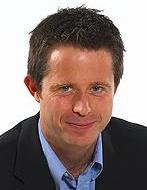
Movlin
Peter är en erfaren konsult och som jobbar som systemarkitekt, systemintegratör, teknisk projektledare och mentor. Peter har mer än 16 års erfarenhet ifrån IT inom industrin, ekonomi och finans och e-business/e-handels system. Peter har hållit ett flertal föredrag för Javautvecklare i Göteborg (Web Services, JavaServer Faces (JSF), Spring, Google Web Toolkit (GWT)).
Presentation: GWT - Ajax med Java 
Har du funderingar på hur du ska implementera din "applikation på kran" som ska slå världen med häpnad eller enbart införa en liten användbar funktion mha Ajax utan att behöva vara guru på JavaScript? Då är Google Web Toolkit (GWT) en stark kandidat på din utvärderingslista av webramverk. Efter att ha lyssnat på det här föredraget kommer du förstå hur du med GWT kan utveckla (och debugga) skalbara och funktionella Ajaxapplikationer i Java och i samma utvecklingsverktyg som du använder idag. Peter kommer bl.a. gå igenom grunderna hur GWT fungerar, GWT:s komponentbibliotek och hur du skapar egna komponenter, olika tekniker för att kommunicera mellan klient och server samt integration med andra JavaScript-bibliotek. Demonstrationer och exempel ifrån verkligheten kommer förtydliga förståelsen för GWT.
Torbjörn Stavenek
Devoteam Quaint

Devoteam Quaint
Torbjörn är konsult och arbetar som arkitekt och utvecklare på IT-konsultbolaget Devoteam Quaint. Med över 10 år i branschen har han hjälpt många olika kunder i flera olika branscher. Inom Javaområdet har Torbjörn jobbat sedan starten 1995. Torbjörn har i grunden en datavetenskaplig utbildning och dessutom flera olika Java-certifieringar (inkl. Sun Certified Enterprise Architect).
Han gillar att sätta fingret på de där otrevliga frågetecknen i projekten som andra undviker och som i slutändan brukar avgöra om projektet blir ett fiasko eller en succé. Torbjörn brinner för kvalitet inom alla delar av ett projekt, från stavning i kravspecifikationen till kodtäckning i enhetstesterna. Han är också speciellt intresserad av arkitektur, konstruktionsmönster, öppen källkod, AI och gränslandet mellan verksamhet och IT.
Presentation: Arkitektur på molnfri höjd - och neråt 
Nytt projekt. Nya krav. Ny arkitektur. Eller? Finns det några generella arkitekturprinciper som kan användas i alla projekt? Hur ska man tänka när man skapar en ny arkitektur? Vad ska man fokusera på när man gör om en befintlig arkitektur? Denna presentation innehåller ett antal olika principer och ledstjärnor att följa vid arbetet med en arkitektur, från det abstrakta till det konkreta. Presentationen kommer att gå igenom grundläggande värdeord som exempelvis konsekvens, enkelhet och minimalism. Även mer konkreta tips på trevliga konstruktionsmönster för den nitiske arkitektens verktygslåda kommer att ges.
Per Mellqvist
Henrik Lagercrantz
Bwin Games
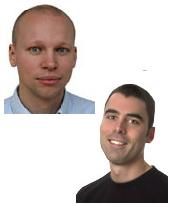
Henrik Lagercrantz
Bwin Games
Per Mellqvist och Henrik Lagercrantz arbetar som systemarkitekter i Bwin Games arkitektgrupp. Bwin Games utvecklingsavdelning i Stockholm omfattar ca 150 personer och arbetar i huvudsak med pokerutveckling i Java. Systemet har ca 10 miljoner registrerade spelare och 35 000 samtidiga anslutna klienter vid peak.
Presentation: Skalbar spelutveckling i Java 
Framgång på internet kan betyda extrem tillväxt av användare och transaktioner. För att möta tillväxten behövs skalbara system som växer på ett effektivt sätt med mer hårdvara. Java som språk och miljö lämpar sig väl för utveckling av skalbara system, men valet av Java är ingen garanti för framgång. Baserat på vår erfarenhet från ett av världens största pokersystem delar vi med oss av ett antal erfarenheter kring att växa snabbare än Moores lag. - Prestanda är inte skalbarhet - Funktionell nedbrytning - Fokus på API - Atomicitet dödar skalbarhet (ACID vs BASE) - Asynkronitet och idempotenta anrop - "Stateless" JEE begränsas av databasen - Distribuerade cacher - Bryt isär databasen - Partitionering kräver domänkunskap - Replikering för tillgänglighet - Alla beroenden kostar - Re-use är dyrt. Per Mellqvist har tidigare talat på IDC LinuxWorld Summit samt på Red Hat Value2 Tour.
Arne Evertsson
Evertsson Enterprise

Evertsson Enterprise
Arne är kodare och entreprenörd, och håller Henrik Knibergs Scrum and XP from the trenches som den bästa IT-bok han nånsin läst. Han brinner för systemutveckling som han fått betalt för att ägna sig åt sedan 1995. Som kodare sätter Arne empati högst, eller som Paul Graham utrycker det: "Empathy is probably the single most important difference between a good hacker and a great one".
Presentation: I want YOU for my $10 billion web project 
Arne driver filöverföringstjänsten Sprend/skickafilen.se. För att göra Sprend till en framgångssaga i klass med Skype krävs affärssinne, obotlig optimism, disciplin, empati och kodare! Den här sessionen är en skamlöst försök att locka värdens bästa kodare till ett projekt med högtflygande ambitioner.
Men vad är väl en filöverföringstjänst? Det låter ju fruktansvärt långtråkigt och dötrist.. och.. alldeles, alldeles underbart! Tag chansen att gå på en session där din kreativitet och kompetens räknas lika högt som presentatörens. Vi kommer att gemensamt staka ut varthän webbtjänsten Sprend skall ta vägen i framtiden. Vilka coola, nyttiga features skall implementeras? Och var tusan finns degen? Jag lovar att ingen kommer att gå lottlös härifrån. 'Nuff said.
Erik Hellman
IBS JavaSolutions

IBS JavaSolutions
Erik Hellman arbetar för närvarande som konsult på IBS JavaSolutions AB i Göteborg. Han har tidigare jobbat som systemarkitekt och utvecklare av telekomsystem på Ericsson AB i Karlskrona. Erik har tidigare gjort presentationer om 3D-utveckling i Java på Jfokus, JavaOne och JavaZone. Förutom att ha 3D-programmering som hobby så intresserar han sig för allt från stora distribuerade server-system till små applikationer för mobiltelefoner.
Presentation: Sluta skriva 'new' - En jämförelse av Dependency Injection ramverk 
De flesta som kodar Java idag känner troligtvis till begreppet Dependency Injection. Många av oss har också använt sig av något ramverk som använder detta design-mönster, och även om man inte gjort det så känner man säkert igenom Spring Framework eller JBoss Seam. Med jämna mellanrum så dyker det upp nya ramverk som stödjer Dependency Injection och det är idag näst intill ofrånkomligt att man kommer komma i kontakt med ett av dem förr eller senare. Idag kan man välja mellan Spring Framework, JavaEE5/EJB3, JBoss Seam, PicoContainer eller Google Guice, för att nämna de vanligaste. Så vad är egentligen Dependency Injection för någonting, hur fungerar det, varför ska vi använda det och viktigast av allt, vilket skall man välja? I denna presentation går vi igenom begreppet och hur det hela fungerar samt jämför de vanligaste ramverken för Dependency Injection för att få en bild över vad som passar i olika situationer. Vi tar också en titt på hur man kan bygga sitt eget Dependency Injection-ramverk själv i de situationer då existerande ramverk inte går att använda.
Markus Wahl
IBS JavaSolutions

IBS JavaSolutions
Presentation: Hotpatcha din Java-6-applikation 
Med Suns Java-6 kan man ansluta till ett JVM och ändra klassfilerna i ett körandes program, och detta utan att ha förberett JVM:et vid uppstart. Tekniken som tillåter detta är Suns dynamiska attach-funktion (com.sun.tools.attach) som gör det möjligt att ansluta en egen agent. Tillsammans med Reflection-API:et och Instrumentation-API:et betyder det att du kan inspektera datastrukturerna i programmet och ändra programkoden. Mer precist uttryckt skriver du en agent som när den "anländer" till/får köra i JVM:et använder java.lang.instrument för att ändra byte-koden för metoder i en klass som kanske redan är instansierad. Dessutom: * Skillnader mellan detta och vanlig remote-debuggning från IDE * Begränsningar * Eclipse-plugin? * Stöd/ramverk för modifiering av byte-kod * Vad man kan använda det till * Skillnaden mellan Class Redefine och Class Retransform
Patrik Fredriksson
Citerus

Citerus
Presentation: Specification pattern som refactoring-verktyg 
Inom domändriven design (Domain-Driven Design) finns ett antal olika taktiska och strategiska mönster beskrivna. Specification är ett taktiskt designmönster, presenterat i Eric Evans bok Domain-Driven Design, som kan användas inte bara vid utveckling av ny kod utan även som ett kraftfullt verktyg vid refactoring-arbete. Specifikationer kan med fördel användas för att ta potentiellt ful kod, som är svår att läsa och förstå, och kapsla in i väl definierade tydliga affärsregler som en del av domänmodellen. Specifikationens begränsade ansvarsområde gör den lätt att testa, och genom att på ett elegant sätt lägga till operationer som AND, OR och NOT är det möjligt att kombinera olika specifikationer till nya regler som kan användas genom hela kodbasen. Ger vi dessutom dessa affärsregler meningsfulla namn kan vi skapa kod som inte bara löser vårt problem på ett trevligt sätt utan också gör att vi kan utläsa affärsreglerna i koden nästan som naturligt språk. Om vi vidare drar nytta av Java 5 generics kan vi ytterligare förbättra implementationen av specifikationerna. Denna presentation visar hur vi genom att applicera Specification-mönstret kan förvandla fulkod till finkod!
Peter Backlund
Citerus

Citerus
Presentation: Viva la evolución 
En presentation av ramverket Grails. Fokus ligger på hur Javautvecklare kan öka sin produktivitet genom att kombinera nya tekniker och kunskaper kring etablerade ramverk.
Robert Varttinen
CIBER

CIBER
Robert är konsult, anställd av CIBER Sweden AB, och arbetar som Javaarkitekt och utvecklare. Robert har jobbat med Java nästan lika länge som programmeringsspråket har funnits.
Presentation: Går det att programmera GNU-Radio med Java? 
Går det att programmera GNU Radio med Java? GNU Radio (http://gnuradio.org/trac) är ett Open Source radio projekt. Det innefattar inte bara programvara utan även maskinvara. Allt är open source, till och med kretskortslayout, etc. GNU-Radio är en så kallad SDR, Software Defined Radio, det vill säga det mesta av radio signal procesandet sker i en CPU. I detta fall en vanlig PC, körandes Linux eller Windows. För att kunna ta emot, och sända, en radio signal så krävs det en så kallad USRP (http://www.ettus.com/images/USRP.jpg), Universal Software Radio Peripheral. Överföringen till PC:n sker med hjälp av USB. Idag programmeras GNU-Radio med hjälp av Python skript. Den består i princip av Ptyhon moduler. I viss mån går det även att använda C++, dock blir det i dagsläget svårt att styra vissa dotterkort (mottagar- och sändarkorten) i USRP:en. Hur programmerar vi då denna med Java? Går det? Kan vi köra Python skripten i Java 6? Bygga ett eget internt C++ API och använda JNI?? Annat?
Thorbiörn Fritzon
Sun Microsystems

Sun Microsystems
Thorbiörn Fritzon började med Java redan vid releasen 1995. Sedan 1999 är han Javaarkitekt på Sun Microsystems och då och då talesman i Java-sammanhang. Thorbiörn skriver böcker och är en återkommande talare på konferenser och andra evenemang. Hans hobby är programmeringsspråk och han har hur många som helst.
Presentation: Java i flera programmeringsspråk
I Java SE 6 kom en av de viktigaste och mest förbisedda nyheterna i Java sedan Java2: Java Scripting Framework vilken ger Java-programmeraren tillgång till ett standardireserat sätt att hantera program skrivna i en uppsjö av språk som Ruby, Python, Lisp och JavaScript. I och med Java SE 6 kan högproduktiva ramverk som Ruby on Rails och algoritmiska språk som Scheme bli en del av våra verktyg. Den här sessionen är en djupdykning i vad det innebär att skriva Java-applikationer i andra språk än Java. Vi provar att implementera program i en blandning av språk, tittar på vilka problem som i praktiken kan uppstå och vad det innebär att implementera en script-motor som stödjer Java Scripting Framework (JSR-223). Har man med sin laptop kan man följa med praktiskt.
Presentation: The Future of Java 
Where wil Java be in ten years? Will it survive or will it be replaced by .NET or Ruby on Rails and similar super-productive frameworks? Will Java be the next Cobol, an embaressing legacy languages with huge maintenance costs and no future? Will all money and time we've invested in learning Java only go to waste? This talk outlines Sun's bet on the future of Java and what we as Java Community can do to adapt to the future.
Tobias Ivarsson
Neo Technology

Neo Technology
Presentation: Jython - det vassaste verktyget i Java-lådan 
De senaste åren har sett ett ökat intresse för dynamiska språk. Samtidigt har fler språk letat sig in på Java-plattformen. Python var ett av de tidigaste språken att implementeras för JVM (1997) och har idag en trogen användarskara. Utvecklingen av öppen källkodsprojektet Jython har dock varit vilande den senaste tiden medan andra språkimplementationer, som till exempel JRuby, tagit ordentlig fart. Den tiden är förbi, Jython har vaknat. Tobias Ivarsson har under sommaren blivit sponsrad av Google för att utveckla en ny kompilator som gjort Jython kompatibel med den senaste specifikationen av Python. Python på Java-plattformen har fördelen att exekveringsmodellen i Python är ganska lik den som JVM implementerar. Traditionellt sett har Jython dock implementerat mycket av den overhead som CPython implementerar, trots att motsvarande stöd redan finns från JVM. Tobias Ivarsson arbetar med att förändra detta för att öka prestanda och förbättra integrationen med ekosystemet kring Java. Presentationen ger en introduktion till Jython för den vanlige Java-utvecklaren och fortsätter med hur Jython ska bli det vassaste verktyget för Java-plattformen. För Java-utvecklare genom kortare utvecklingscykler och sömlös integration med det övriga ekosystemet. För Python-utvecklare genom snabbare kodexekvering, riktigt trådningsstöd och ett större ekosystem.